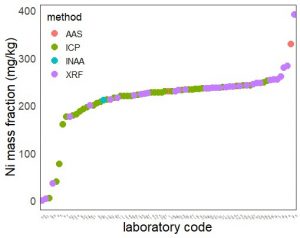Participation in Proficiency Testing
 Proficiency testing (PT) is a cornerstone of good laboratory practice, enabling laboratories to monitor, assess and improve the quality of their analytical data. It is one of the most effective ways a laboratory can judge its performance against its own requirements and the general level of performance of other participating laboratories. Evidence of participation in appropriate PT schemes is increasingly being required by accreditation agencies.
Proficiency testing (PT) is a cornerstone of good laboratory practice, enabling laboratories to monitor, assess and improve the quality of their analytical data. It is one of the most effective ways a laboratory can judge its performance against its own requirements and the general level of performance of other participating laboratories. Evidence of participation in appropriate PT schemes is increasingly being required by accreditation agencies.
The principles of proficiency testing are that participants receive, typically twice a year, a sample of homogeneous material appropriate to their work. They analyse it and return their data via a dedicated website. All participants are identified just by a code number which only they and the scheme organisers know. Each participant receives a full report on each round of the scheme showing all the data.
Data for each analyte contributed by participating laboratories are compared with an assigned value and a ‘z-score’ calculated. The magnitude of the z-score allows each contributing laboratory to assess the accuracy of their analytical results in comparison with the other participating laboratories. Most laboratories will be happy with most of their z-scores for most analytes in most rounds. If they judge this not to be the case after an evaluation of data published in a report of the round, they have the opportunity to investigate analytical discrepancies and correct their procedures, if necessary.
It is crucial that participants treat the PT samples in exactly the same manner as their routine samples and do not employ special techniques or personnel.
The IAG runs three proficiency testing programmes: (i) GeoPT for the geochemical analysis of silicate rock powders, (ii) G-Probe for microanalysis involving natural and synthetic glasses, minerals and pressed powder pellets; and (iii) our most recent PT programme G-Chron, devoted to U-Pb dating of minerals, which was launched in 2019 with over 70 participants.
